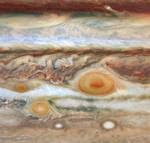I can’t believe I missed it. OK, until I read about it in TIME magazine, I’d never even heard of it, though it’s been going on for a half dozen years. There’s a group that has called for Loving Day Celebrations around June 12th each year “to fight racial prejudice through education and to build multicultural community.”

The celebration is named for Mildred Jeter and Richard Loving, who had the audacity to fall in love with each other. Unable to get married legally in their native Virginia – he was white, she was black – they got hitched in Washington, DC and “established their marital abode in Caroline County”, Virginia.
Ultimately, on “January 6, 1959, the Lovings pleaded guilty to the charge” stemming from their interracial marriage, “and were sentenced to one year in jail; however, the trial judge suspended the sentence for a period of 25 years on the condition that the Lovings leave the State and not return to Virginia together for 25 years. He stated in an opinion that:
“‘Almighty God created the races white, black, yellow, malay and red, and he placed them on separate continents. And but for the interference with his arrangement, there would be no cause for such marriages. The fact that he separated the races shows that he did not intend for the races to mix.'”
The Lovings moved to DC, and in 1963, took legal action against the state of Virginia. Meanwhile, Mildred Loving also wrote to US Attorney General Robert Kennedy for assistance, and he referred the Lovings to an ACLU lawyer who took the case pro bono. The Lovings lost at every court, with the primary reasoning being that “because its miscegenation statutes punish equally both the white and the Negro participants in an interracial marriage, these statutes, despite their reliance on racial classifications, do not constitute an invidious discrimination based upon race.”

However, their case made it to the US Supreme Court, and on June 12, 1967, the Supreme Court unanimously ruled, in Loving v. Virginia, that the anti-miscegenation laws of Virginia and 15 other states were unconstitutional. Chief Justice Earl Warren, writing for the Court, concluded:
These statutes also deprive the Lovings of liberty without due process of law in violation of the Due Process Clause of the Fourteenth Amendment. The freedom to marry has long been recognized as one of the vital personal rights essential to the orderly pursuit of happiness by free men.
Marriage is one of the “basic civil rights of man,” fundamental to our very existence and survival. To deny this fundamental freedom on so unsupportable a basis as the racial classifications embodied in these statutes, classifications so directly subversive of the principle of equality at the heart of the Fourteenth Amendment is surely to deprive all the State’s citizens of liberty without due process of law. The Fourteenth Amendment requires that the freedom of choice to marry not be restricted by invidious racial discriminations. Under our Constitution, the freedom to marry, or not marry, a person of another race resides with the individual and cannot be infringed by the State.
These convictions must be reversed.
Interestingly, the polling I’ve seen suggests that at the time of the ruling, less than 30% of Americans favored mixed marriages. From TIME:
As late as 1987, a full 20 years after the case, only 48% of Americans said it was acceptable for blacks and whites to date. That number has since jumped to 83%, according to the Pew Research Center. In 2010, the center estimated that 1 in 7 new marriages in the U.S. is now an interracial coupling. In 1961, the year Obama’s parents married, only 1 in 1,000 marriages included a black person and a white person; today, it’s 1 in 60.
In statistics for 2008, 14.6 percent of all marriages were between spouses of different races.
In 2010, there is a Republican running for Congress, Jim Russell, who wrote in 2001, “In the midst of this onslaught against our youth, parents need to be reminded that they have a natural obligation, as essential as providing food and shelter, to instill in their children an acceptance of appropriate ethnic boundaries for socialization and for marriage.” I wrote about him extensively here, and he is hardly alone. So I guess the Loving Day folks still have much work to do.
***
Pete Seeger – All Mixed Up











